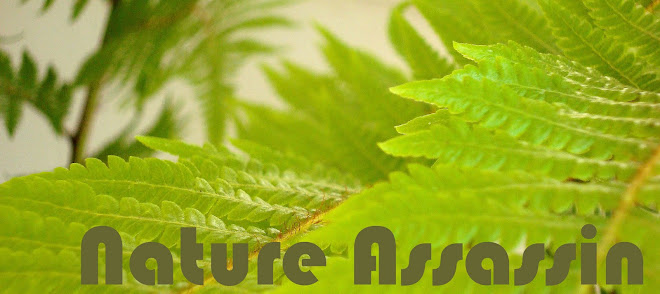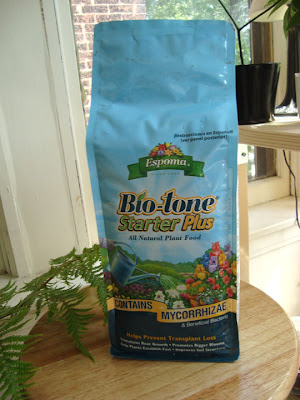Many greenhouses around the Midwest were selling big Alocasias (a.k.a. Persian Palm, Giant Elephant Ear plant, or Taro) this summer out with their annual and perennial garden bounty. They're related to your common African Mask plant (Alocasia amazonica), but bigger. They come in a variety of styles, all lending a distinctly exotic/tropical feel to American gardens. Here in Chicago, you've probably seen them a lot this summer in storefront garden arrangements. They also make awesome houseplants!


Alocasia calidora, March 2008
But what about winter? In some places in the United States, Alocasias can be allowed to die back to the bulb during winter and successfully return in spring. They will not survive hard frosts or temperatures in the teens, however, so in the more northernly latitudes, this is not an option. The assumption is that, like most of our summer garden plants, we will simply throw them away.

Alocasia (portadora?) in Rogers Park
But you don't have to! Alocasias are cumbersome, finicky plants, but it is possible to keep them alive until next summer. Here's some tips for overwintering your Alocasia. Coincidentally, this is a perfect opportunity to talk about prepping all houseplants for the indoor winter.
Acclimatization is the name of this game. With any tropical plant that lives outdoors for the summer, the process of moving indoors can be stressful. Changes in light (strength, direction, photoperiod, etc.), changes in humidity, changes in air circulation... try to keep these things in mind when choosing a place for your plant indoors. You want to mimic the conditions to which they have become accustomed, a.k.a. acclimatize them to the new situation. Sometimes I like to start early (before cold temperatures necessitate a sudden move) by bringing my plants indoors for a day or two at a time, then back out to their previous spots. Some people will reasonably argue that the extra moving stresses the plants, but I believe acclimatization is most effective when it happens gradually.
Light should generally be the same or a little brighter... remember that outdoor shade is still much brighter than indoor shade. This does not mean put them in intense, direct sun - just someplace that receives several hours of bright filtered light every day. Alocasias in particular will not do well in the dark.
Humidity must be increased. The central heating systems in most northernly homes will decimate and dessicate all but the toughest plants. Spider mites also capitalize on dry and stressed plants, so take precautions. Add a cool-air humidifier or vaporizer. Add pebble trays. Group your plants together. Got radiators? You can buy plastic radiator humidifiers very cheaply at most home improvement stores. You can even
decorate them. For your Alocasia, you also might try misting. Misting is a great debate among houseplant people... I mist because I really, really enjoy it. However, it must be a very fine mist, otherwise you're just getting your plant wet. Make sure to mist the underside of your alocasia's leaves. To prevent sunburn and sunspots, avoid misting heavily when sunlight is the strongest... try for afternoon and evening.
Watering must be gradually decreased. With the naturally reduced winter photoperiod, your plants will go into a resting period. New growth will come slowly, and all resources will be more slowly metabolized. Giving them the same amount of water as in spring or summer, when all engines are running, will be too much. Root rot and fungus gnats are the ensuant problems in this scenario. Here's one approach... wait until the soil looks dry. Stick your finger in the topsoil up to the first joint. Still feels dry? Try lifting the pot. With big and beefy plants like Alocasia, just tilt the pot to get a feel for the weight. If the pot feels light, chances are it's safe to give them a little drink. Alocasias in particular appreciate light, consistent moisture. I know that's a lot of conflicting information... all I can say is, with practice you'll get the hang of it.
Fertilizing must be decreased, for all the reasons above.
Some plants may need to be potted-up. Did it grow like the dickens this summer? Look at the bottom of the pot... are roots exploding out of the drainage holes? Does the plant seems constantly thirsty, or does it wilt quickly between waterings? It may be potbound (cue dramatic chipmunk music). Potting-up should typically happen in spring, however, some plants that have put out huge flushes of new growth over summer will benefit from a potting-up in fall. Try to do this early. The plant should have time to adjust to it's new pot before it comes inside. Hold off on the watering for a while... water will pool in the fresh compost that does not yet contain roots, which we know = stagnation, root rot, and fungus gnats. Also, do not overpot. I repeat, do not overpot. The new pot should be one inch bigger in diameter than the old pot. This will save your hiney!

Not ridiculously potbound, but definitely needing more room.
The bottom roots had cracked the plastic pot.
For Alocasias, which are extremely top-heavy, this is a good time to install stakes.

Finally - I cannot stress this enough - before your plant comes indoors, check for pests and take appropriate measures. If your plant lived outdoors this summer, chances are high that it has picked up some opportunistic fauna. Before you even clean the plant off, check for pests. Check stalks, stems, roots, pots, and the undersides of leaves. This is the best time to spot that heinous scale infestation and throw the plant away... before it takes down your entire plant collection mid-January. If you see just a couple of enemy combatants, take them out with a q-tip dipped in alcohol. Then, it's on to the bath. Small plants can be gently showered in the sink. Large plants like Alocasia can be wiped down with a damp rag. You can use a dilute solution of insecticidal soap, if necessary. This is your second line of defense in the battle against hitchhikers. If you have confirmed the presence of insects, isolate the plant and continue treatment. More detailed information on chemical warfare will follow in upcoming posts.


Ta da! Now, hopefully, your green pets/experiment subjects will be adjusted and content in time for winter.







































